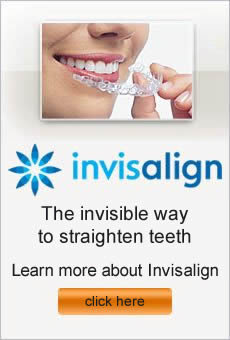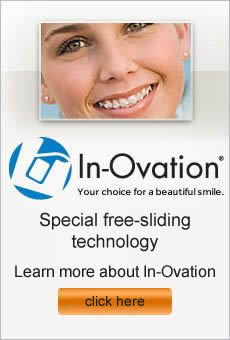Wearing braces on your teeth is a step toward improving your appearance and self-esteem for the rest of your life. A straight, appealing smile is the goal, but you must care for your braces and follow your orthodontist’s instructions during treatment to achieve that goal. Follow these tips for a successful braces journey.
Not surprisingly, you must properly and consistently perform oral hygiene tasks. Your teeth are even more susceptible to plaque buildup and bacteria attacks when you’re wearing braces. Food can easily become trapped in the wires and brackets, and it can be difficult to remove debris. Try to carry a soft-bristled toothbrush with you so that you can stop by the bathroom after eating to clean your braces and teeth. Always rinse thoroughly with water to dislodge food, and brush gently from various angles.
Even though it can be tricky, don’t neglect flossing. Thread the floss between your teeth and wires, and gently work the floss between the braces and teeth. Try using a threader available at drugstores to insert the floss more easily. Your orthodontist may also recommend rinsing with mouthwash daily to fight bacteria.
Always stick to the diet that your orthodontist provides. Do not eat the foods that are known to damage braces, such as popcorn or hard candies or sticky caramel. Items on the list are common culprits for breaking your brackets or wires. It’s best to consider every food before you eat it so that you avoid items that may damage your braces. In some cases, you can simply cut the food into smaller pieces and still be able to eat it.
You may also be warned against consuming too many starchy or sugary foods and drinks, which promote decay and gum disease. Also, break potentially harmful habits like chewing ice or knawing on pencils. Another way to protect your braces is to wear a mouth guard when engaging in sports or other physical activities. A customized mouth guard is the best option for protecting your smile.
Following these guidelines will help your teeth remain clean and healthy while undergoing treatment, so that your smile is in tip-top shape when the braces are removed.
Schedule your appointment at our Sherman Oaks dental office
An orthodontist’s treatment for you or your family member is something that will impact the rest of your lives. A smile isn’t something you want to put at risk, so choosing the right healthcare professional is important. There is absolutely nothing wrong with shopping around, or getting a second opinion, when it comes to orthodontic treatment.
The main reason most patients seek a second opinion is to increase the confidence in the treatment plan and the provider’s ability to successfully carry it out. If your treatment plan is straightforward and the orthodontist comes highly recommended to you by friends or your dentist, you may feel comfortable pursuing treatment without getting a second opinion. Remember to consider all aspects of the practice, such as the staff, environment, cost, appointment times, and emergency policies.
If you choose to obtain multiple opinions, you may be given several different treatment options. This can be confusing, but it just means that you need to do your research and decide which plan and which specialist you feel most confident in. Different orthodontists use different procedures or techniques to address the same issues, and that doesn’t mean that one way is absolutely wrong. You just need to determine which plan fits best with your goals and lifestyle.
If you are uncomfortable with the proposed treatment, ask lots of questions about the reason for it and why other options aren’t recommended. If you are still uncertain, be sure to get another opinion. Also make sure that a provider doesn’t push you toward treatment that you get the feeling is their “only” or “favorite” method. For example, if an orthodontist says that teeth “always” must be extracted as part of every patient’s treatment, that is a reason to get a second opinion.
You should never feel pressured by an orthodontist to begin treatment immediately or rush into anything. Your healthcare is always your decision, so consult orthodontists until you are happy and confident with the plan and the provider.
It may seem that there’s a target market for just about everything, and it turns out that Invisalign braces are no exception. This revolutionary method for improving smiles has introduced Invisalign Teen that provides all of the benefits of the Invisalign system, but adds a few more perks for teenagers.
Invisalign gently moves teeth using a clear plastic tray that fits over the top and/or bottom teeth. A series of trays is created for each patient as they progress through treatment. An advanced computer program is used to identify where the teeth are initially and where they should be moved to create a beautiful smile. Each aligner is custom-made using the computer data, and then the patient wears each one in the order that they are provided in the series.
Aligners should be worn 22 hours a day for effective and timely results. You may think this is impossible for teens, but not with all the benefits of Invisalign. They are made from clear plastic that is nearly invisible in the mouth, so teens don’t complain about unattractive braces. The aligners are removed for both eating and cleaning, meaning no diet restrictions or difficulties performing dental hygiene tasks.
Other benefits of Invisalign Teen include very high comfort level with no concerns of wires poking the mouth or painful adjustments. There is also little time spent in the orthodontist’s office because checkups are only needed about every six weeks. Overall treatment time with Invisalign is usually about one year, depending on the severity of the patient’s orthodontic issues.
How does Invisalign Teen differ from adult Invisalign? To address concerns that teens won’t wear the aligners enough, Blue Dot compliance indicators have been added. The dots fade away with wear so that the teen will know it’s time for a new aligner when the dot is gone. For teens who might still have permanent teeth coming in, eruption tabs have been added to hold space for teeth that are not yet fully in.
Invisalign has become an increasingly popular treatment option for adults, and now teens can join in by selecting Invisalign Teen. More and more teens are choosing this approach every day.
If you hear the term headgear, it will likely conjure up images of an awkward contraption forced upon many an adolescent over the years in their quest for straight teeth. As much as patients might like to avoid it, headgear is a proven way to guide the growth of your jaw. It is definitely still used today by orthodontists for some patients to achieve their ideal smile.
Why is headgear needed?
Headgear is an appliance used to correct overbites by holding back the upper jaw’s growth, allowing the lower jaw to move into the correct position. It creates forces that guide the growth of your face and jaws, and also helps move your teeth into better position.
How much do I need to wear it?
Headgear is usually worn about 10 to 14 hours daily, and usage lasts anywhere from 6 to 18 months. The time required depends on how severe your overbite is and how much growth you have remaining. Each case is unique, so your orthodontist will identify how much wear is necessary. It’s important to follow your doctor’s instructions so that this portion of your treatment can move quickly and achieve optimum results.
Does headgear hurt?
Your teeth will be sore when chewing for several days when you begin wearing headgear, but will subside as long as you wear it consistently. Often the second and third days after beginning usage are the worst, and then soreness lessens. Taking ibuprofen and eating a soft diet will help. You’ll achieve the quickest relief if you continue to wear your headgear even though your teeth are sore.
How do I get the best results?
Your headgear only works if you wear it! Follow these guidelines:,/h2>
• Remove your headgear as directed so that you don’t injure yourself.
• Take off your headgear before playing sports or running.
• Don’t allow anyone to grab or pull on your headgear.
• Take your headgear with you to all orthodontist appointments.
• Follow proper techniques to care for and clean your headgear.
An estimated 18 million Americans suffer from obstructive sleep apnea (OSA), a serious sleep disorder that can lead to other health issues. With OSA, the soft tissues collapse in the throat, which restricts the airways and causes periods where breathing stops. These apnea episodes cause you to briefly awaken and resume your normal breathing. Some people experience this pattern more than 100 times a night.
What are the types of sleep apnea?
Obstructive sleep apnea (OSA) is the most common type of sleep apnea. Central sleep apnea is less prevalent and occurs when the brain fails to signal the body to breathe.
How do I know if I have OSA?
For those who suffer from OSA, sleep apnea can create various unpleasant side effects. Irritability, daytime drowsiness, and headaches are common symptoms experienced by individuals with sleep apnea. Snoring often indicates the presence of sleep apnea, but not all snorers have OSA.
Should I be worried about sleep apnea?
Not only does sleep apnea disturb your ability to rest, but it can also create other issues. Without treatment, sleep apnea can contribute to high blood pressure, stroke, heart attack, diabetes, and depression.
How do you treat sleep apnea?
If you are worried about sleep apnea, your dentist or orthodontist can review your symptoms and may possibly suggest a sleep study to confirm the diagnosis. Use of a continuous positive airway pressure (CPAP) machine is a typical treatment recommendation for sleep apnea; however, many individuals find this therapy uncomfortable or ineffective. Your dentist can fit you for a night guard, an oral appliance that will hold your jaw in the correct position and keep your airways open.
Dental Care Rick Van Tran DDS & Associates Manteca, California
The latest innovation in orthodontics may give your teenager a reason to smile. The Invisalign method has added Invisalign Teen to their group of products, which uses the system of a series of clear plastic aligners to adjust teeth but adds a few features that appeal especially to teens.
Invisalign treats the same problems that traditional braces address, such as teeth crowding, gaps and bite issues. Instead of using the well-known metal wires and brackets, Invisalign uses customized aligner trays. An orthodontist who is trained and certified in the Invisalign method takes pictures and impressions of the teeth. 3D technology simulates tooth movements from the start to end of treatment. This creates the basis for aligners to be developed unique to each patient.
The average treatment duration lasts about one year. During that time, your teen will need to wear the aligners daily for 20-22 hours. The trays are removed for eating and cleaning, which means there are no diet limitations and no difficulties performing oral hygiene tasks. They can also be removed when playing sports or musical instruments, or even for special occasions like prom or school photos.
Every two weeks or so, the aligners need to be exchanged for a new set in the series. Here’s one area where Invisalign Teen comes in handy. There is a Blue Dot Wear Indicator which fades when the aligner needs to be changed. Your teen can easily see when it’s time for a new tray. This also allows the orthodontist to tell if your teen isn’t complying to the wear guidelines. If your teen loses an aligner, six free replacements are included in the process.
Another feature of Invisalign Teen is that the aligners have Eruption Tabs to accommodate the second molars. It doesn’t matter whether or not your teen’s molars have erupted yet, because Invisalign Teen takes that into account.
Invisalign Teen works continuously to straighten your teenager’s teeth and move them into better positions for a beautiful smile. The invisible design removes the stigma of traditional metal braces, and allows teens to maintain their active lifestyles without hindering their eating or hygiene routines. Invisalign Teen provides the ideal way for your teen to keep smiling throughout orthodontic treatment.



